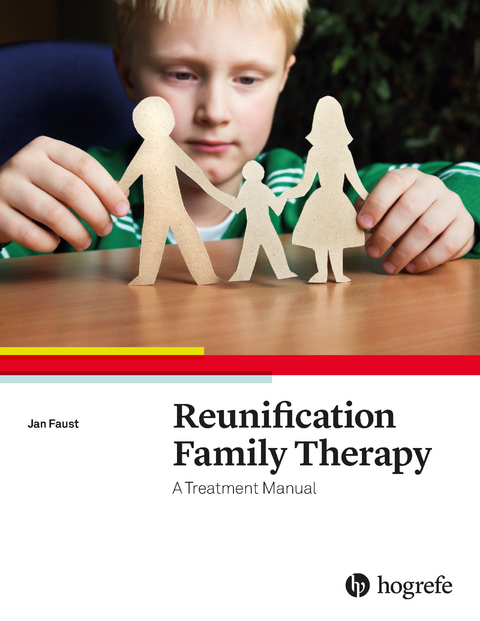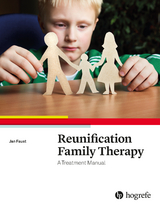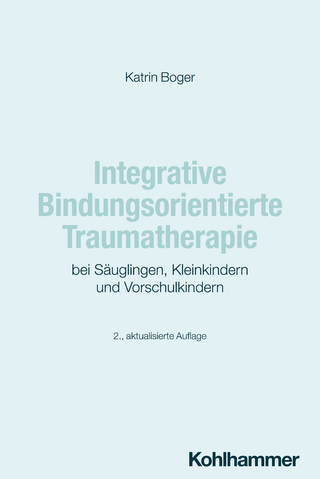Reunification Family Therapy: A Treatment Manual
Hogrefe Publishing (Verlag)
978-0-88937-491-1 (ISBN)
Childhood problems are often related to and exacerbated by the disintegration of the family structure, whether through parental separation and divorce, military service, or incarceration. Reunification therapy is a therapeutic process incorporating different empirically based methods (CBT, humanistic, and systemic) to help repair relationships between parents and children and restore not only physical contact but also meaningful social, emotional, and interpersonal exchanges between parents and children.
This unique manual, bringing together the vast experience of the author, outlines the many situations many families currently face and why the need for reunification therapy exists. The therapist works
firstly with the individual family members and then with all family members in conjoint sessions.
The manual expertly guides clinicians through pretreatment decisions and processes to enable them to decide where, when, and in what form reunification therapy is appropriate, taking into account ethical, legal, and special family issues. Detailed chapters outline the structure and issues for the individual and conjoint sessions, as well as a step-bystep treatment plan template. Additional tools in the Appendix enable clinicians to monitor and effectuate change.
Jan Faust, PhD, ABPP, is Professor at the College of Psychology Faculty, Nova Southeastern University (NSU), Fort Lauderdale, FL. Dr. Faust developed the Child and Adolescent Traumatic Stress Program, which is a clinical, training, and research facility serving children exposed to traumatic events. She has conducted various research projects, and currently she is conducting treatment outcome research on treatment efficacy for families in reunification therapy, parent empathy training, and children with posttraumatic stress disorder. She has published many articles in peer-reviewed journals and book chapters in the field of child, adolescent, and family psychology.
Table of Contents
1: Introduction to Family Structure and Fragmentation
of the Family
2: Bases and Elements of Reunification Therapy
Mechanisms Responsible for Breaches in the
Parent-Child Relationship
Why Does the Need Exist for Reunification Therapy?
Why Not Let the Child Decide? Application of
Developmental Psychology
Spontaneous Reunification
Treatment Selection Guided by Empirical Evidence
and Specific Characteristics of Family
Reunification Therapy: Terms and Related Concepts
3: Reunification Therapy as a Specific Form of
Empirically Based Family Therapy
What Reunification Therapy Is NOT
Reunification Therapy: A Composite Treatment
Cognitive and Behavioral Domains
Humanistic (Client-Centered) Domain
Systemic Family Therapy Domain
4: Pretreatment Decisions and Process
Appropriateness for Reunification Therapy in Military
Deployment and Institutionalization Cases
Appropriateness for Reunification Therapy in
Family Law and Guardianship Cases
Ethical and Legal Considerations
Informed Consent: Statement of Understanding
The Contract, Court Order, or Agreed Order
Do No Harm
Avoiding Multiple Relationships
Avoiding Making Custodial and Time-Sharing
Recommendations
Practicing Within the Scope
Communicating With Attorneys and Allied
Professionals Prior to Treatment
When Reunification Therapy Is Inappropriate
Necessary Therapist Characteristics
5: Working With the Child
Explanation of the Reunification Process to the
Child or Adolescent
Establishing Effective Working Relationships: The
Buy In, The Child
Capitalizing on Children's Natural Curiosity
"Are You My Mother?"; "Are you My Father?"
Assessing and Addressing Resistance: The Child
Siblings: A Double-Edged Sword
Developing an In-Session and Out-of-Session
Safety Plan
Assessing Resistance of Others and Determining
Outside Influences
Critical Collaboration With Other Case-Specific
Professionals
Children's Individual Differences and Special
Abilities
6: Working With the Non-Time-Sharing Parent
Initial Therapy Considerations
Anger and Blame
Parents Who Have Been " Victimized" and/or Maintain
Their Victim Role
Parents Without Parenting Leverage
Temporary Abdication of Parenting
Parents Without Adequate Parenting Competencies
and Self-Confidences
Fear of Rage, Retaliation, and Rejection of the Child
and the Alternate Parent
Ground Rules for Non-Time-Sharing Parents
7: Working With the Time-Sharing Parent
Resistance Versus Intentional Interference
Enhancement of Time-Sharing Parents' Engagement
in Reunification Therapy
Time-Sharing Parents Require Empathy and
Support Too
Closing Parenting Loopholes
The Buy-In
Subterfuge
Therapist At Risk of Being Thrown Under the Bus
8: Conjoint Sessions and Effecting Change
Initial Non-Time-Sharing Parent-Child Contact
Staying Present-Focused
Instructing Parents Not to "Take the Bait": Children's
Attempts at Triangulating Parents
Presenting a Unified Front
"More Is More"
Homework: A Necessary Tool
Utilizing Interparental Electronic Communications
to Effectuate Change
Obstacles During Family Treatment
Including Other Professionals in the Process to
Effectuate Change
Children Who Cannot Separate From Time-Sharing
Parent for Reunification Therapy
Use of Ancillary Strategies to Enhance Contact
Developing New Traditions
Enhancing Attachment: Photography and Videotaping
Planned Termination of Reunification Therapy
9: Legal Processes During and After Treatment
Translucent Legal Agendas (AKA Not-So-Transparent
Agendas)
"Less Is More"
10: Special Topics
Preparing Children When Reunification Is Not
Possible
Reunification Therapy With Other Primary Caretakers
Reunification Therapy When Physical Distance Is
a Factor
Immersion Interventions: Workshops and Retreats
Reunification of Infants and Very Young Children
With Their Parents
11: Fundamental Treatment Plan
Reunification Therapy for Dissolved Parental
Relationships
Important Notes
Appendices
A: Reunification Therapy: Motivational Interviewing
Questions
B: Reunification Therapy: Behavioral Activation
C: Empathy Training for Parents
| Erscheinungsdatum | 25.12.2017 |
|---|---|
| Verlagsort | Toronto |
| Sprache | englisch |
| Maße | 215 x 279 mm |
| Themenwelt | Kinder- / Jugendbuch ► Sachbücher |
| Geisteswissenschaften ► Psychologie ► Familien- / Systemische Therapie | |
| Recht / Steuern ► EU / Internationales Recht | |
| Sozialwissenschaften ► Pädagogik ► Sozialpädagogik | |
| Sozialwissenschaften ► Soziologie | |
| ISBN-10 | 0-88937-491-0 / 0889374910 |
| ISBN-13 | 978-0-88937-491-1 / 9780889374911 |
| Zustand | Neuware |
| Haben Sie eine Frage zum Produkt? |
aus dem Bereich




